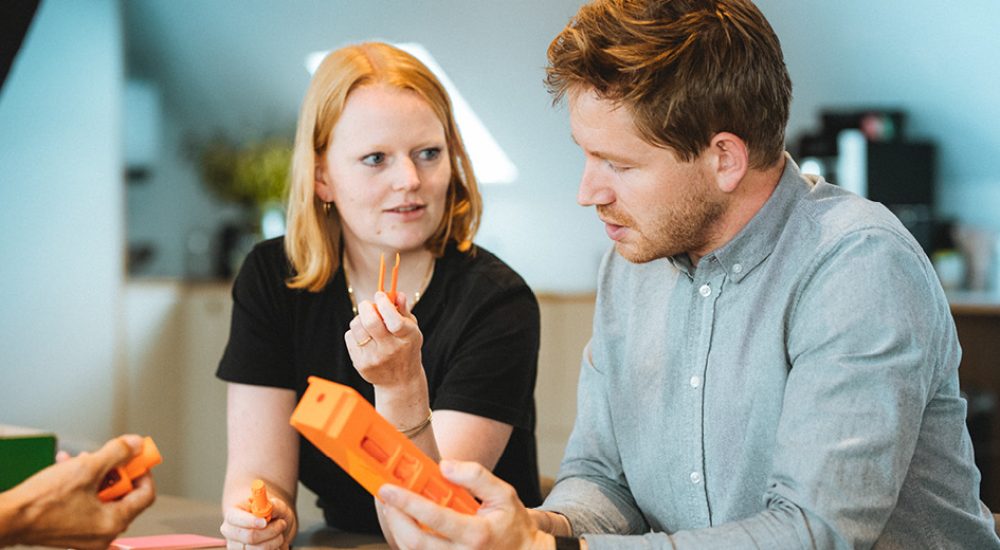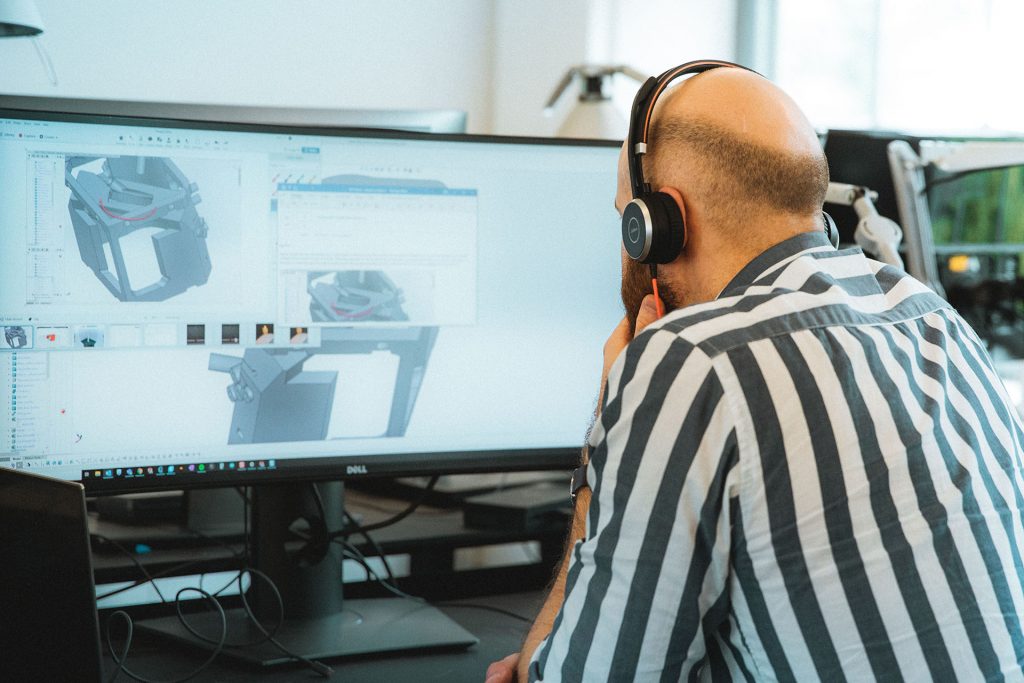The Key to Successful Integration
A guide to balancing data and Imagination in innovation
How do you make sure that your project is really pushing the boundaries of innovation? As business leaders, we all know the importance of data-driven decision-making, but traditional methods are beginning to fail us when it comes to bold and creative ideas. In this article, we’ll explore why balancing data and imagination is just as important as analytics when it comes to driving innovation.

THE LONG READ
How data and imagination can speed up the front-end of innovation
The Front-End of Innovation (FEI) is the process through which new ideas are explored, generated and tested with the market. The FEI includes all activities from the identification of a market opportunity or need, through the development of a concept, to the pre-validation of product-market fit.
Innovation begins with an idea, but it is the implementation of that idea that determines whether it will succeed or fail. The FEI is critical to successful innovation because it is where the rubber meets the road – it is where ideas are put to the test to either survive or be killed off.
The goal of FEI is to identify and develop innovative ideas that can be transformed into successful products or services.
There are several different approaches to front-end innovation, but they generally follow a similar process that involves four key phases:
- Identify: This is the first phase of the front-end innovation process, where the team identifies a problem or opportunity to be addressed. This may involve conducting research to understand customer needs and behaviors or identifying gaps in the market that could be filled with a new product or service.
- Generate: In this phase, the team generates a wide range of potential solutions to the problem or opportunity identified in the previous phase. This may involve brainstorming sessions, sketching, or prototyping ideas.
- Evaluate: In this phase, the team evaluates the potential solutions generated in the previous phase to determine which ones are most promising. This may involve conducting customer research or pretotyping and testing ideas to gather feedback.
- Select: In this final phase, the team selects the most promising solution from the ones evaluated in the previous phase and develops it further. This may involve creating a detailed business plan or prototyping a more refined version of the solution.

One way to compress the timeline is to involve customers early in the process. This approach, known as “co-creation” or “co-innovation”, can help reduce risk and increase the chances of success by getting feedback from customers throughout the process.
Another way to speed up the FEI is to do Design Sprints. Design Sprints are often used to solve complex problems in a short amount of time, and they can be a useful tool for teams looking to rapidly test and validate ideas. They are particularly popular in the technology and design industries, but they can be used in any field where innovation and problem-solving are important.
One example of a product that was designed using a design sprint is the Nest Thermostat, developed by Nest Labs. The Nest Thermostat is a smart device that allows users to control their home heating and cooling remotely using a smartphone app.
The Nest team used a design sprint to quickly prototype and test their idea for a smart thermostat. They started by defining the problem they wanted to solve (the need for an easier way to control home heating and cooling) and generating a range of potential solutions. They then selected the most promising solution and created a prototype, which they tested with users to gather feedback. Based on the feedback they received, the Nest team made adjustments to the design and eventually released the Nest Thermostat to the market. It has since become a popular product, with millions of units sold worldwide. Read the full story here
This is just one example of a product that was designed using a design sprint, but there are many others in a wide range of industries. The design sprint process is particularly useful for quickly prototyping and testing ideas in order to bring new products to market efficiently.
The roles of Data and Imagination in Innovation
Data has always been a critical part of the innovation process, and the common opinion is that its role is becoming increasingly important as we have entered the digital age. Data can be used to track trends and understand customer needs
However, data alone is not enough to drive innovation. We also need imagination and risk taking. Innovation involves creating something new that has value. This requires us to think outside the box and take risks.
In the words of the world’s 1 management thinker, 2017, Roger Martin;
testimonial
To be truly innovative one cannot rely on data. At worst, data looks back in time, at best, it is a snapshot of the present. To form attractive futures, we need imagination. Imagination allows us to identify new opportunities for growth. This is because the front-end of innovation is a highly creative process that requires a willingness to think outside the box and explore new possibilities. Data and data analysis can be helpful in this process, but they are often not sufficient on their own.
Why? Because data is often limited: In the early stages of innovation, data is often limited or incomplete. This can make it difficult to rely solely on data to generate and evaluate ideas. Imagination allows us to fill in the gaps and consider new possibilities that may not be immediately obvious based on existing data.
Without data, it would be difficult to know how customers react. But without imagination and risk-taking, we would never create anything new or valuable. The key is to find the right balance between these three things.
Innovation has always been about more than just coming up with new ideas. It’s also about taking risks, investigating the unknown, and pushing boundaries. This is especially true when it comes to the front end of innovation, where new ideas are first generated and developed.
However, as the world continues to change and evolve at an ever-increasing pace, the role of imagination in innovation is becoming even more important. With so much change happening all around us, it’s more important than ever to be able to imagine different futures and different possibilities.
This doesn’t mean that we should abandon all logic and reason in favour of wild conjecture. But it does mean that we need to open our minds to new ways of thinking and give ourselves permission to explore the impossible. Only by doing so will we be able to keep up with the rapid pace of change and continue to innovate in meaningful ways.
How to leverage imagination as an organization?
- Encourage creativity: Encourage your team to think creatively and come up with new ideas. This may involve setting aside dedicated time for brainstorming sessions, providing resources for research and experimentation, or offering training in creative problem-solving techniques.
- Foster a culture of curiosity: Encourage a culture of curiosity within your organization, where people are encouraged to ask questions, explore new ideas, and challenge assumptions. This can help to foster a sense of innovation and encourage people to think creatively.
- Encourage collaboration: Encourage collaboration within your organization, as diverse perspectives and experiences can often lead to new and innovative ideas. Consider setting up cross-functional teams or encouraging employees to work together on projects that involve different areas of expertise.
- Embrace failure: Encourage your team to take risks and embrace failure as a learning opportunity. This can help to create a culture of experimentation and encourage people to think outside the box and try new things.

Imagination as a Crucial Business Capability
Overall, while data and analysis are important in the front-end of innovation, imagination is more crucial because it allows us to think creatively, explore new possibilities, and understand the needs of our customers and users.
Imagination is a crucial business capability because it allows us to think creatively and come up with new ideas and solutions to problems. In today’s rapidly changing business environment, organizations need to be able to adapt and respond to new challenges and opportunities. Imagination allows us to see possibilities that might not be immediately obvious, and it is essential for driving innovation and staying competitive.
Imagination is also important for building strong, resilient organizations. It allows us to think outside the box and consider new approaches to problems, rather than relying on familiar solutions. This can help us to be more adaptable and better able to navigate challenges and uncertainty.
In addition, imagination is essential for building and maintaining strong relationships with customers, clients, and partners. It allows us to understand and empathize with their needs and develop innovative products and services that meet their needs.
Overall, imagination is a crucial business capability because it allows us to think creatively, drive innovation, and build strong, resilient organizations that can navigate change and uncertainty.
WANT TO talk?
Let's get in touch
Do you want to know more or didn’t you find what you were looking for?
As Head of User Experience and Design Kasper is prepared to receive your enquiry.

Want to know more?
Insights you might also be interested in:

Why you should apply virtual DoE to the design process
Early product insights and fewer physical tests are some of the benefits of using Design of Experiments in medical device development.